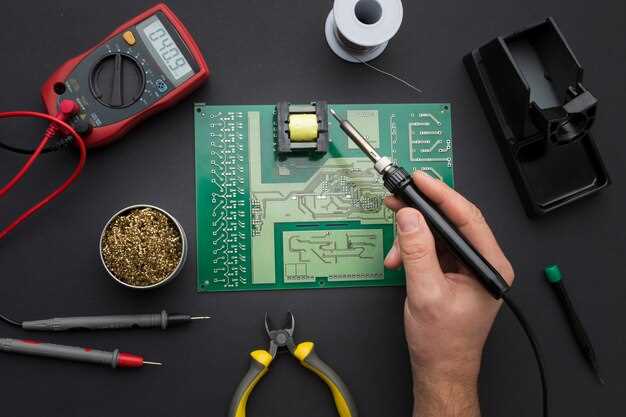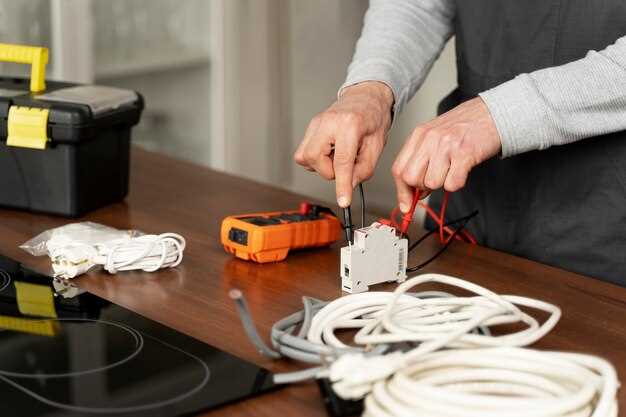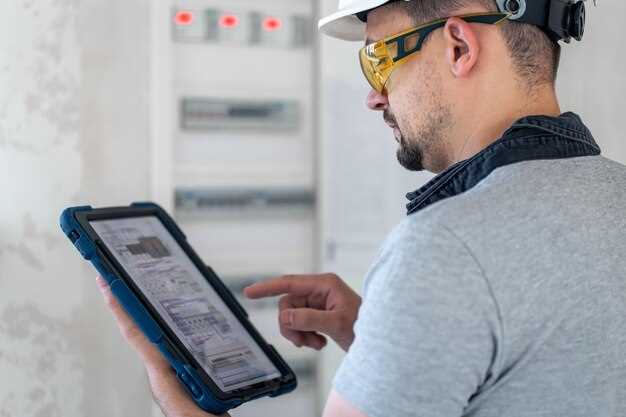
Electrical issues can be both frustrating and daunting, particularly for those who lack experience in handling such problems. However, understanding how to systematically approach electrical troubleshooting is crucial for both safety and efficiency. This guide aims to provide a clear and structured process for diagnosing and resolving common electrical issues in a step-by-step manner.
In this guide, we will explore essential techniques and tools that can help identify the root cause of electrical problems. Whether you are dealing with flickering lights, circuit breaker trips, or non-functional outlets, the methodology outlined here will empower you to tackle these issues confidently. Safety is paramount, and we will emphasize precautions every step of the way.
Follow along as we delve into the intricacies of electrical systems, breaking down each troubleshooting phase into manageable sections. With this guide, you will not only learn how to effectively resolve problems but also gain a deeper understanding of your electrical system, making you better prepared for future challenges. Whether you are a DIY enthusiast or a homeowner looking to gain some valuable knowledge, this guide is designed to assist you in your electrical troubleshooting journey.
Identifying Common Electrical Issues in Household Appliances
Understanding common electrical issues in household appliances is crucial for effective troubleshooting. Many problems can arise from simple causes that are easy to identify and fix. This section outlines several prevalent issues and how to recognize them.
1. No Power
The most common indication of a malfunctioning appliance is when it does not power on. Check the following:
- Ensure the appliance is plugged in securely.
- Inspect the outlet by testing it with another device.
- Look for tripped circuit breakers or blown fuses in the electrical panel.
2. Overheating
Overheating can lead to appliance malfunctions or even fires. Symptoms include:
- Unusual odors or burnt plastic smell.
- Excessive heat on the exterior casing.
- Appliance shutting off automatically due to thermal protection.
3. Unusual Noises
Appliances should operate quietly. If you hear strange sounds, consider these points:
- Humming or buzzing could indicate motor issues.
- Grinding noises might suggest worn bearings or components.
- Clunking or rattling could mean loose parts or debris inside.
4. Leakage
Electric appliances should not leak fluid. If you notice any moisture, investigate the following:
- Check seals and connections for damage.
- Examine hoses and pipes connected to the appliance.
- Identify any pooling liquid underneath the machine.
5. Inconsistent Performance
When appliances fail to operate as expected, it may point to underlying issues:
- Check if the settings are properly adjusted.
- Look for clogs or obstructions that may affect functionality.
- Ensure that components like filters or belts are clean and intact.
6. Error Codes
Many modern appliances showcase error codes. Refer to the manufacturer’s manual for explanations. Common actions include:
- Resetting the appliance to clear minor faults.
- Consulting the troubleshooting section in the user manual for specific guidance.
By recognizing these common issues, homeowners can efficiently address electrical problems and ensure the proper functioning of their household appliances. Regular maintenance and inspections also play a pivotal role in preventing these issues from arising.
Using a Multimeter for Accurate Measurements during Troubleshooting

A multimeter is an essential tool in electrical troubleshooting, providing accurate measurements of voltage, current, and resistance. Understanding how to use a multimeter effectively can significantly enhance your diagnostic capabilities. Here are the key steps to utilize a multimeter during troubleshooting.
1. Select the Correct Measurement Mode: Before taking any readings, ensure the multimeter is set to the appropriate mode. For voltage measurements, select the DC or AC voltage setting depending on the circuit type. For current measurements, choose the correct amp range. Resistance measurements require the multimeter to be in resistance mode.
2. Safety First: Always observe safety precautions when working with electrical devices. Ensure the multimeter probes are in good condition and that you’re wearing appropriate personal protective equipment. If measuring high voltages, use insulated probes and maintain a safe distance from exposed conductors.
3. Measuring Voltage: To measure voltage, touch the black probe to the ground or common point and the red probe to the point where voltage is to be measured. Read the display to determine the voltage. Ensure to interpret the result accurately, considering both the value and polarity if applicable.
4. Measuring Current: To measure current, you need to break the circuit and connect the multimeter in series. Disconnect one side of the load, connect the black probe to the circuit side, and the red probe to the load side. This setup allows current to flow through the multimeter, providing an accurate current reading.
5. Measuring Resistance: When measuring resistance, the circuit must be powered off. Connect the probes across the component or section of the circuit you wish to measure. The display will show the resistance value. A common mistake is not ensuring the component is disconnected, which may give inaccurate readings.
6. Interpreting Readings: Take time to analyze the readings. A steady reading often indicates a properly functioning component, while fluctuating or zero values might point towards faults. Use reference values from manufacturer specifications for comparison.
7. Recording Measurements: As you perform measurements, document the results. Keeping a troubleshooting log helps track changes and understand patterns, aiding in identifying persistent issues.
8. Troubleshooting Strategy: Use measurements to develop a structured troubleshooting strategy. Start with the most accessible points in the circuit to identify issues systematically. An effective approach combines multimeter readings with logical reasoning to isolate faults.
In conclusion, mastering the use of a multimeter allows for effective troubleshooting of electrical systems. By following these steps and understanding how to interpret the measurements accurately, you can diagnose and solve electrical issues more efficiently.
Safety Practices for Conducting Electrical Repairs at Home

When undertaking electrical repairs at home, prioritizing safety is paramount. Begin by ensuring that you are equipped with the necessary tools and knowledge to perform the task at hand. Here are essential safety practices to follow:
1. Turn Off the Power: Before starting any repair, locate the circuit breaker and turn off the power to the area you will be working on. Use a voltage tester to confirm that the power is completely off. Never assume the circuit is de-energized.
2. Use Personal Protective Equipment (PPE): Equip yourself with appropriate PPE such as insulated gloves, safety goggles, and non-conductive shoes. This gear will provide an additional layer of protection against electrical shock and injuries.
3. Work in a Dry Environment: Ensure that your workspace is dry and free from moisture. Water is a conductor of electricity, and working in damp conditions significantly increases the risk of electrical shock.
4. Avoid Overcrowded Workspaces: Keep your workspace organized and free of clutter. Having too many tools and materials in one area can lead to accidents. Ensure that you have enough space to work safely.
5. Follow Manufacturer Instructions: Read and adhere to the manufacturer’s guidelines for any electrical devices or components you are working with. This includes installation instructions, maintenance tips, and safety requirements.
6. Inspect Tools and Equipment: Regularly check your tools and equipment for signs of damage or wear. Faulty tools can be hazardous and may lead to accidents. Replace any damaged equipment immediately.
7. Use Ground-Fault Circuit Interrupters (GFCI): In areas where water is present, such as kitchens and bathrooms, make use of GFCI outlets. These devices automatically cut off power if they detect an imbalance, reducing the risk of shock.
8. Be Aware of Your Surroundings: Ensure that you are aware of your surroundings while conducting repairs. Identify potential hazards such as ladders, open doors, or other individuals present who might inadvertently interfere with your work.
9. Know Your Limits: If you encounter a repair that seems beyond your skill level, do not hesitate to call a professional electrician. Attempting complex repairs without proper training can lead to dangerous situations.
10. Keep a First Aid Kit Handy: Always have a well-stocked first aid kit accessible in case of an accident. Familiarize yourself with basic first aid procedures for electrical injuries, including how to administer CPR if necessary.
By adhering to these safety practices, you can significantly reduce the risk of accidents and ensure that electrical repairs are performed safely and effectively.